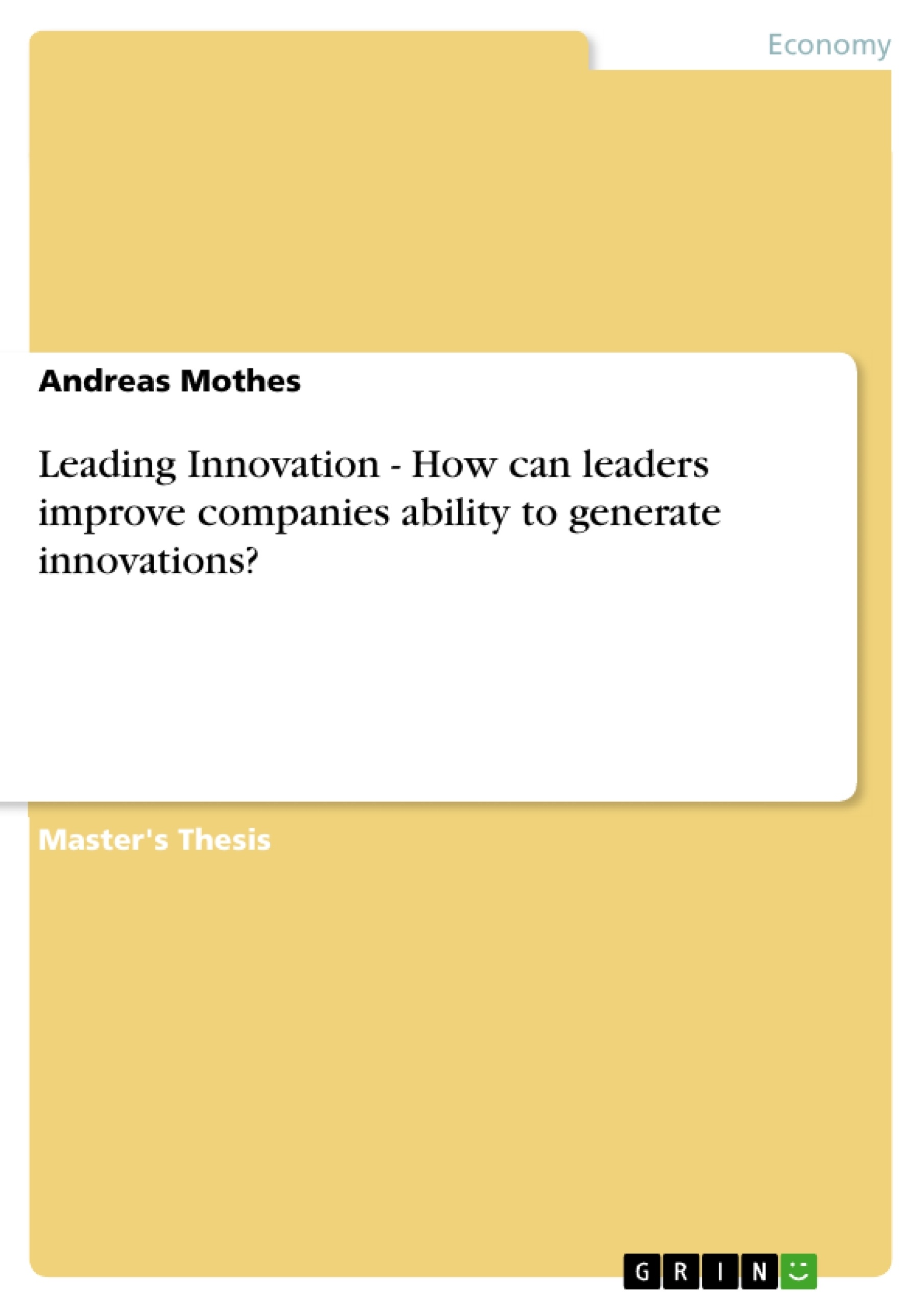During the last decades the environment of most companies has become increasingly dynamic and competitive due to the globalisation and internationalisation of markets. The intense competition leads to reinforced campaigns to win customers with new, unique products or services defending or improving market positions. Consequently, based on the increased variety, customers’ expectations are rising while the time to market as well as the duration ot the product life cycle are decreasing. [Cum1997, p. 22] [Jon2002, p. 24, p. 31] [Yuk2002, p. 294]
The increased velocity and complexity of global business competition demand innovative, flexible and responsive solutions to emerge. Companies, especially those competing on the global scale, have to consider innovations as a key goal, a powerful influence on organisational performance and a strategy which creates a sustainable competitive advantage against a growing number of new, efficient and focused competitors. [Hal2003, p. 434] [Mum2002, p. 705] “Innovation is the source of increasing value and differentiation in an evermore crowded and homogeneous marketplace [Jon2002, p. 31].” Innovation is crucial in times of economic growth, remaining the source of increasing revenues and profitability, but more than ever in times of recession representing the survival in an increasingly selective market. [Jon2002, p. 12]
However, innovation can be much more than this – it is the impulse of continuous advancement of the humankind. The fact that our world is moving towards the age of total mobility, in which not only all people and organisations are part of a global network, but in which access to information shall be available independently on the place and time, is leading to the increased importance and rapid growth of wireless communications possibilities. Companies within the telecommunications industry are therefore confronted with a fast growing demand for wireless solutions by end-customers and other high-tech industries (e.g. computer industry) to create the portability of a connected world. Hence, telecommunications as the key player within this field is one of the fastest growing and dynamic global businesses. [Bou2001, p. 168] [God2000, p. 1034] [Sun2005, p. 107]
[...]
Table of Contents
- Introduction
- Background
- Field of study
- Purpose of the study
- Choosing the topic
- Delimitations
- Outline
- Innovation, telecommunications, and leadership
- Innovation process, creativity and change
- The telecommunications industry
- Innovative developments of wireless technology
- The need for commitment to innovation
- Summary
- Leading the innovation
- Leadership for an innovative environment
- Favourable competences of leaders
- Leaders' possibilities of influence
- People-oriented influencing possibilities
- Work-oriented influencing possibilities
- Summary
- Implications for the research
- Research model
- Methodology
- Research problem
- Preparation of the study
- Research approach
- Research strategy
- Screening the cases
- Secondary data collection
- Primary data collection
- Execution of the study
- Processing the data
- Evaluating the data
- Limitations
- General limitations
- Objectivity
- Validity
- Internal validity
- Construct validity
- External validity
- The role of leadership in fostering an innovative environment
- Identifying key competences of leaders in the context of innovation
- Examining the influence of leaders on people and work in relation to innovation
- The importance of information sharing and open-mindedness in promoting innovation
- The challenges of achieving a successful innovative climate within organizations
Objectives and Key Themes
This master thesis aims to investigate the possibilities for leaders to improve their companies' ability to generate innovations, particularly focusing on the starting phase of the innovation process. The research seeks to understand how leaders can positively influence factors that contribute to innovation, particularly in the context of a highly innovative environment such as the wireless telecommunications industry.
Chapter Summaries
The introduction sets the stage for the thesis by discussing the background, field of study, purpose, and delimitations of the research. It also provides an outline of the following chapters.
Chapter 2 delves into the concept of innovation, focusing on its relationship to creativity and change. It then examines the telecommunications industry, specifically exploring innovative developments in wireless technology and the importance of commitment to innovation within the industry. The chapter concludes by discussing leadership in relation to innovation, analyzing the key competences of leaders and their influence on fostering an innovative environment.
Chapter 3 presents the methodology employed in the research. It details the research problem, the preparation of the study, the execution of the study, the processing of the data, the evaluation of the data, and the limitations of the research. This chapter provides a comprehensive explanation of the research process.
Keywords
This thesis focuses on innovation, leadership, telecommunications, the wireless industry, and the creation of an innovative environment. The research explores the influence of leaders on innovation, emphasizing the importance of people-oriented and work-oriented influencing possibilities. It also examines the role of information sharing, open-mindedness, and risk acceptance in fostering a successful innovative climate.
- Citar trabajo
- Andreas Mothes (Autor), 2006, Leading Innovation - How can leaders improve companies ability to generate innovations?, Múnich, GRIN Verlag, https://www.grin.com/document/58267



